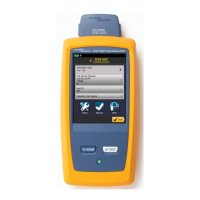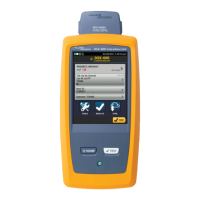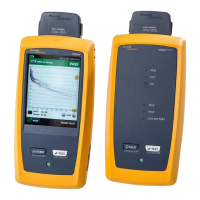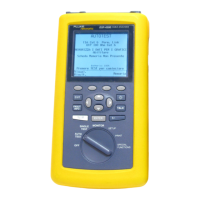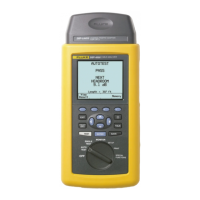DSX-600 CableAnalyzer
Technical Reference Handbook
122
A test passes, but the plot shows that measurements exceed the limit
A dB rule possibly applies. See “About dB Rules” on page 90.
Resistance test gives a FAIL, FAIL*, or PASS* result
Link is too long (may need to remove coiled service loops)
Bad connection due to oxidized or loose contacts
Wire gauge is too thin
Wires in a pair have too much difference in the number of twists
(resistance is unbalanced)
Wrong type of patch cord used
Notes
The HDTDR analyzer can help you locate the cause of
a resistance failure. See page 137.
To do the resistance test continuously while you look
for a fault, tap TOOLS > Single Tests > Resistance.
Length gives a FAIL result
Link is too long (may need to remove coiled service loops)
NVP is set incorrectly
Note
To do the length test continuously while you look for
a fault, tap TOOLS > Single Tests > Length.
Length exceeds the limit, but the length test did not fail
If the length of the shortest pair does not exceed the limit by 10 %, then the
length test passes even if other pairs exceed the limit. This is the 10 % rule for
length, as given in the ANSI/TIA standard. See the Fluke Networks Knowledge
base for details.
Propagation delay or delay skew gives a FAIL result
Link is too long (may need to remove coiled service loops)
Cable has different insulation materials on different pairs. This causes
differences in the twist ratios, which causes differences in propagation
delays among pairs.
Table 7. Causes of Twisted Pair Test Failures (continued)
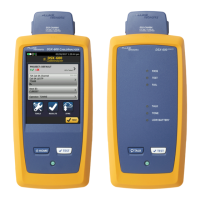
